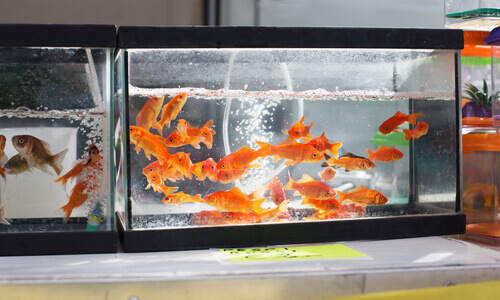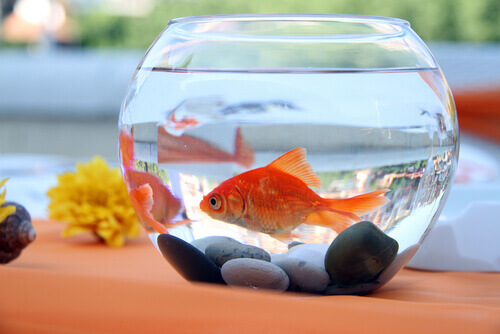Different Types of Water for Your Fish Tank

Aquarophilia is an interesting hobby that has gained many followers and consists of breeding fish and other organisms in a fish tank. If you want to get started in the world of aquatic animals, the first thing you should know about is the different types of water for your fish tank.
There are different types of aquariums, those of warm or cold tropical and saltwater, and those of warm or cold freshwater. The type of water you choose will depend on the type of fish you want select to breed.
Remember that the aquarium must meet the conditions to reproduce, as much as possible, the natural environment of the chosen fish so that they grow healthily.
Water conditions
For both saltwater and freshwater fish tanks, the water must be clean and free of toxic substances that may compromise the health of your fish. The use of tap water is admissible if it’s previously treated with chlorinated solutions.
It’s very important to control the pH of the water for your fish tank. Generally, fish can live in alkaline water, but it’s very difficult for them to survive in acidic water.
It’s a good idea to use different tests that exist in the market. Mainly, the pH test, which measures the acidity of the water, and the nitrate test, which measures the level of waste it contains.

Types of water: Saltwater and tropical or warm water fish tanks
If you’ve decided on saltwater fish, your aquarium must be very sturdy, because saltwater is very heavy and dense. The glass must be of excellent quality to resist the weight.
The pH to keep marine fish should be between 8 and 8.3. In addition, you should incorporate filters in your tank to keep the water clean and clean the filters regularly.
Saltwater tanks also require a water cooler. This device, although it raises the costs, allows you to host a broader biodiversity of fish, corals, and crustaceans of great color and beauty.
Types of fish for a saltwater tank
Specialty stores collect saltwater fish in the ocean and seas, and, among the most common, we can mention the clownfish, angelfish, and butterflyfish. Beautiful and colorful, these specimens can last for many years if properly cared for.
We should try to ensure that the fish we’ve chosen share feeding habits. Also, they should be similar in their requirements for temperature, water pH, and tank lighting.
Types of water: Warm freshwater tanks
If the choice is a freshwater tank, you’ll start with a tank of at least 60 liters. Water is the nutrient par excellence and will house and enable the life of countless species.
For a warm water fish tank, you’ll need a heating system, which keeps the water at a temperature between 71.6 and 80.6 degrees. Guppies, mollies, and platies are ideal for this type of tank.
Likewise, you must make sure that the fish chosen are similar in their habits and preferences. In this way, you’ll avoid confrontations between our fish.
Coldwater tanks
In practice, fresh and cold water tanks are the easiest to maintain. However, you have to include a good filtering system to guarantee the quality of the water, and thus the health of the fish.
The ideal temperature for a fresh and cold water fish tank is 64 degrees Fahrenheit. Upon observation, if you notice little activity in your fish, it means that the temperature has dropped.

The goldfish is one of the most common fish for fish tanks. Its variety in sizes, the shape of its fins, and its red, white, black, and orange coloring, undoubtedly make it a must for your aquarium.
Aquatic plants
It’s a very aesthetic factor to include aquatic plants regardless of the type of water in your tank. Whether salt or fresh, cold or warm water, besides decorating your fish tank, they’ll provide a base of natural vegetables and will serve as a shelter for your fish.
The benefits of having a fish tank
With little space, you can recreate a natural environment at home and enjoy a wonderful spectacle. It’s good to consider the therapeutic effects of the observation of a fish tank. The bright colors of the fish and the rhythmic movements of their swimming transmit a special feeling of peace.
